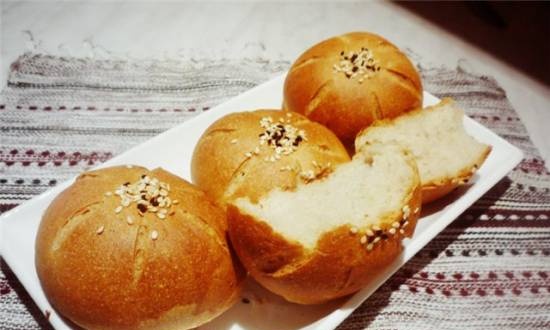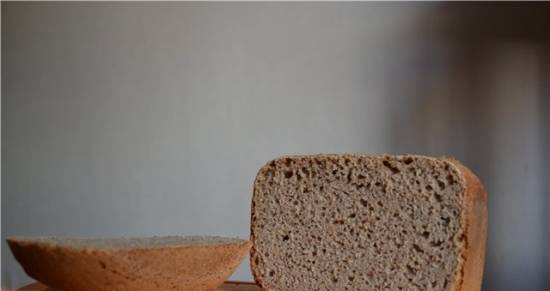Russian fish soup, fish soups
Category: First courses
Ingredients
Fish
Onion
Garlic
Parsley
Bay leaf
Allspice
Salt
Cooking method
Let's start with small fish - this is the first option. Let's exclude crucian carp, rudd and roach from the list - they are the least suitable for our purpose. Best of all - ruff and perch. First, rinse the fish a little - precious mucus will give additional strength to the broth. It is not necessary to gut the very small fish, but the larger one, gut it, rinse it, pull out the gills with the roots (they add bitterness) and remove the eyes (there is no broth from them, one dregs). Naturally, we did not forget to stock up on two medium onions, four cloves of garlic, parsley root, bay leaf, allspice and peas, as well as salt, preferably large, per kilogram of fish. That's all for now.
Put the prepared fish in a saucepan, fill it with cold water (2.5 liters per kilogram of fish), add the peeled roots, onions and cook with a slow boil for 40 minutes to an hour. Put the bay leaf, pepper and salt 10 minutes before the end of cooking. We filter the finished broth.
To get a transparent ear, you can lighten the broth with a lion, but our ancestors rarely did this. Ukha is the main dish of the lean Russian table, and the egg makes it milder. Therefore, it is more correct to clarify the broth with pressed or grained black caviar (unless, of course, it is a pity).
Take 50 g of caviar and grind it in a mortar, gradually adding a spoonful of cold water. We dilute with a glass of cold water, add a glass of hot fish soup and, stirring, pour in two steps into a saucepan with fish soup. After the first part of the brace is poured in, the ear should boil - only then can the rest be poured in. When boiling again, remove the lid from the pan, keep the pan on low heat for 15–20 minutes, then turn off the heat and let the ear stand for 10–15 minutes so that the brace settles to the bottom. Now you can drain the fish soup completely and serve it on the table, putting a piece of boiled fish (the one that has not boiled) on the plate.
If you want to cook a "double" fish soup (it tastes better!), Then put portioned pieces of fillet of something more impressive, for example pike perch, into the prepared and strained broth from small fish, and cook for another twenty minutes. For the first broth, you can use not only small fish, but also waste from large fish - heads, fins, bones and tails.
White, red, black
Previously, there was a fairly clear hierarchy of fish soup species from different fish. For example, ear made from asp, carp, chub and carp was called "black"; from pike perch, perch, ruff, whitefish - "white". The most delicious, of course, was considered "red" - from sturgeon, beluga and sterlet (they were called "red" fish, that is, beautiful, the best). "Plast" fish soup was made from salted, dried and dried spread fish - it was scalded with boiling water, in which anise or fennel was previously cooked, and then put into water. Dried fish went to the "sluggish" fish soup, dried or fresh mushrooms were added to it. From smelt they cooked "Chudskaya" or "Pskov" fish soup, from essence (dried small fish) - "Onega", from cod and halibut - "Pomorskaya".
The ear from burbot became famous - "mevaya" ("men" - burbot). And although in the old days not everyone liked him - they thought that burbots eat drowned people (where can you feed so many drowned people?), Our ancestors liked to put burbot liver in a collection ear (you can also use milk), previously stewed in salted and acidified water with lemon juice. Both the liver and milk of burbot reach their maximum size at the beginning of winter, so the real ear burbot is seasonal. When the time comes, we will definitely try.Take a large burbot and carefully remove the skin from it. Gutted and set aside the milk and liver. Cut the pulp from the bones; we will throw the head, bones, tail and fins into a pan with small change and cook the first broth, or, as they say, the first broth.
While the base is being prepared, let's get down to fish meat. Pass through a meat grinder, mix with a couple of tablespoons of flour and an egg, salt and pepper. Roll out the minced meat into a roller with a diameter of 3 cm, put it in the boiling broth for about five minutes, then take it out and, when it cools down, cut it into circles (it will be too lazy to cut - just make the meatballs). Let our already strained and ready-made broth boil for itself little by little. Dip milk and liver into it, cook for ten minutes, and five minutes before cooking, put fish meatballs there. Add a spoonful of capers, a slice of butter and pour into plates, throwing 3-4 olives, a circle of lemon into each plate and sprinkle with fresh herbs. Let's serve lemon to my ear - an old Moscow custom.
By the way, the so-called "Makaryevsky bailiff's soup" (there was one) was also usually cooked from burbot. At the end, a bottle of Madeira was put into the saucepan where it was being prepared "to warm up", a little wine was added to the ear, and the rest, warmed up, was served to the ear. Who said something about burbot? ..
Royally
There is no doubt: fish of noble blood - sturgeon and sterlet - give the ear a delicate, delicate taste. But you cannot do without richness and aroma, which appear only thanks to fish fines. In Moscow taverns of the nineteenth century, sterlet and sturgeon fish soup were certainly cooked in ruff broth, considering pure sturgeon too cloying, and purely sterlet too wasteful. And a seemingly worthless bony ruff in a luxurious royal ear became an irreplaceable court fish.
If you decide to cook something similar, then you cannot do without guests - call, invite, do not eat such beauty alone! Now let's take a look at our stocks. Let's say we already have brushes or perches (at least a kilogram). We buy the rest in the store - 1-1.5 kg of sterlet or sturgeon, a couple of onions, 3-4 parsley roots, 3-4 slices of celery root, 1 bunch of parsley, green onions, lemon, champagne (better brut), 50 g caviar, salt.
It is clear that first we cook the same broth from ruffs with roots and onions. We throw out the ruff, filter the broth and lighten it with caviar - do not skimp, after all, we cook the "royal" fish soup. Put pieces of sterlet or sturgeon in a transparent broth (wash, cut and wipe dry with a towel), bring to a boil and cook over low heat for 15-25 minutes, depending on the size of the pieces. A few seconds before removing from the heat, pour a glass of champagne into the pan - they love sturgeon luxury! Carefully take out the pieces of fish, put them on deep plates, sprinkle with parsley and carefully fill with strained fish soup. Next to our royal fish soup, lay out slices of peeled and seed lemon, finely chopped green onions and warm bread. Done! The doorbell rings - open ...
Fisherman's
All of the above, of course, is good - saltwort, fish soups, sturgeon delights - but how can a real ear happen at a table covered with a starch tablecloth, surrounded by silver crystal ?! Real ear can only happen in natural conditions - that is, exclusively in nature. This is no longer a dish - it is a philosophy, a ritual, an almost religious ceremony. Firstly, both experienced chefs and sophisticated gourmets usually agree that real fish soup can only be prepared from freshly caught fish. Secondly, water for fish soup must be taken from the same reservoir where they fished. Thirdly, the ear must be breathed in the smoke of a fire. And fourthly, all those present must participate in the correct ear ritual.
For fishing fish soup, the same trifle goes, and from noble fish, pike perch or pike are waiting for their turn. In season, you can season the fish soup with a handful of forest mushrooms, this will give it a delicate sweetish taste and an intoxicating forest aroma.If the catch is so-so, we use pre-boiled rice, pearl barley or millet groats - for density and variety. Not the highest, of course, class, but quite tolerable, but taking into account the beauties of nature, a portion of oxygen, waiting time, appetite and vodka, it is absolutely wonderful ...
About vodka. Pouring half a glass of vodka into the pot at the end or not is everyone's business, no one really knows why this is being done. Some say - "for better assimilation of fish oil with liquid", but we think that this is just part of the ritual - a way to appease the ears by sharing the most sacred with the fish. However, in this case, vodka will also serve as a kind of seasoning, giving the ear a light bitterness - quite different, not peppery. And if you accidentally find such wealth as a bottle of anise, without hesitation, replace it with vodka - fish respects anise.
And the last tip: the ear should be infused. Moving the cauldron away from the fire, cover it with a lid and wait ten minutes. This is the most painful moment - you can even drink the first one. Or remember fishing tales for the time being - after all, they will certainly "go" when there is not a single portion of golden spiritual moisture left ...
Note
Tips and recipes with photos.
Material provided by the magazine "Gastronom".
Once upon a time, ear in Russia was called any stew - and pea, and meat, and fish, and egg. And the expression "cock ear" did not cause smiles. Since then, the meaning of the concept has changed, but this dish is still the pinnacle of Russian cuisine.
Now you can't cook the fish soup without fish. However, we will not call any fish soup that. The wuhu, which we are talking about, is not seasoned with cereals, flour, overcooked onions, etc. Only spices, spicy vegetables (the same raw onion) and roots are put in it. Everything else is just derivatives of a real soup or ear, but with a certain definite epithet. We added, for example, potatoes and greens - we got "fish soup", put tomatoes and butter - we eat "Don fish soup", chopped up carrots - we make "sweet fish soup" ... Although it is better not to do the latter: in the classic ear of perch and ruff carrots inappropriate, the sweetness that these fish give to the broth is quite enough.














